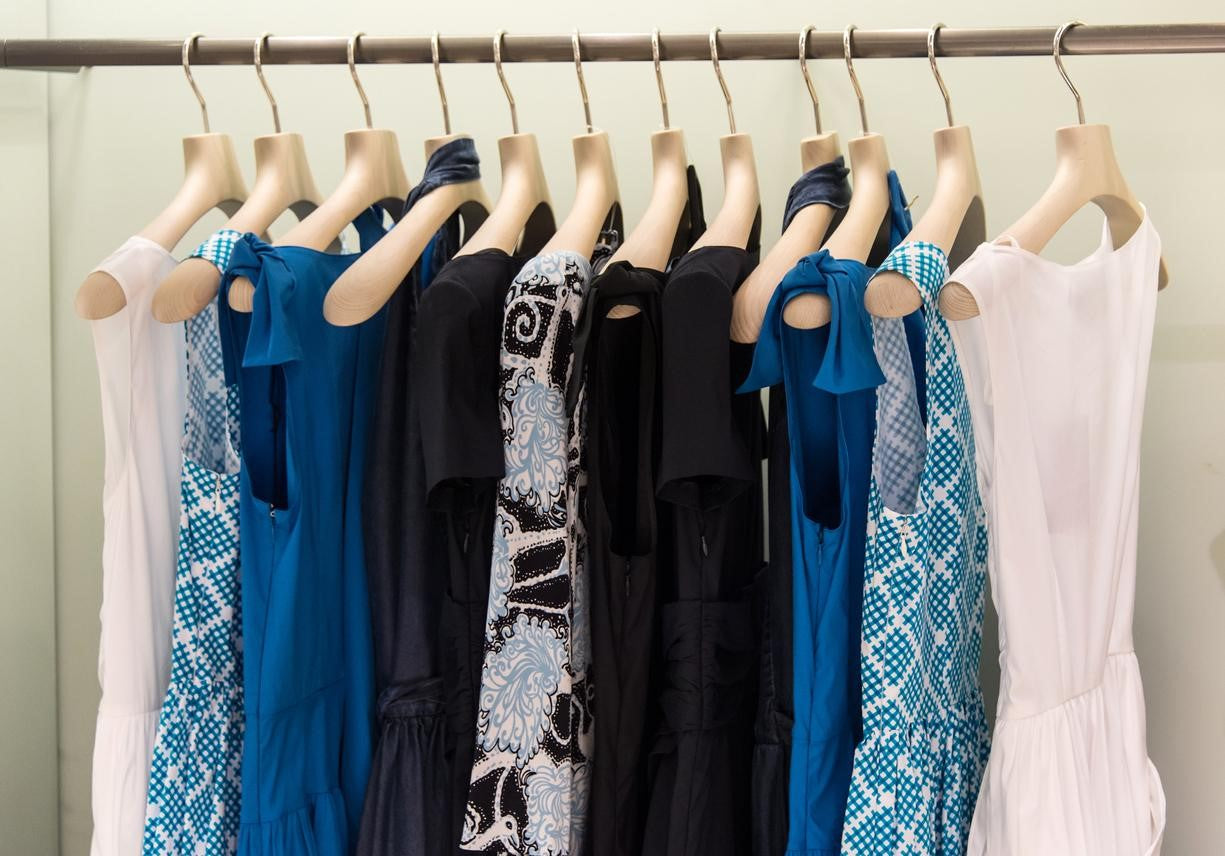Every fashion-conscious individual knows that the key to looking impeccable in skirts and dresses lies in how you store them. Wrinkles and creases can turn your favorite outfit into a fashion faux pas.
This blog will better explain the secrets to hanging skirts and dresses flawlessly. No more worrying about wrinkles or damage – just straightforward techniques to keep your attire pristine.

Choosing the Right Hangers
The foundation of wrinkle-free hanging starts with selecting the right hangers. Here's what you need to know:
Wooden Hangers
A top choice for heavier garments like wool skirts and structured dresses. They provide ample support and help maintain the garment's shape.
Padded Hangers
Perfect for delicate fabrics like silk or chiffon, padded hangers prevent snagging and maintain the garment's natural drape.
Clip Hangers
For skirts, clip hangers with rubberized grips are ideal. They securely hold the waistband without leaving marks or causing creases.
The Art of Hanging Skirts
Hanging skirts properly is essential to avoid unsightly creases. Follow these steps:
- Fold Skirts in Half: Lay the skirt flat and fold it in half vertically so the waistband aligns with the hem.
- Use Clip Hangers: Clip the skirt's waistband to the hanger, ensuring it's evenly distributed along its length.
- Space Them Out: Leave some space between skirts to prevent crowding, which can lead to wrinkles.
Perfecting Dress Hanging Techniques
Dresses come in various styles, each requiring specific hanging methods:
- Strapless Dresses: Use padded hangers to preserve the shape and avoid stretching the neckline.
- Spaghetti Strap Dresses: Opt for hangers with notches to keep thin straps in place.
- Long Dresses: Invest in extra-long hangers designed for maxi dresses. These prevent the hem from touching the floor, reducing the risk of dirt or damage.
Organizing Your Closet
Maintaining an organized closet is essential to avoid overcrowding and wrinkles:
- Categorize by Length: Group skirts and dresses by length to make selecting outfits easier.
- Seasonal Rotation: Store off-season items separately to free up space and minimize crowding.
- Invest in Hooks: Consider installing hooks or pegs for frequently worn items. These provide easy access without disturbing nearby garments.
Protecting Delicate Fabrics
Certain fabrics require extra care to avoid damage:
Silk
Store silk dresses and skirts away from direct sunlight, which can cause fading. Consider covering them with breathable garment bags.
Lace
To prevent snags, lace items should be stored separately from other garments or covered with a layer of tissue paper.
Troubleshooting Wrinkles
Despite your best efforts, wrinkles may still occur. Here's how to tackle them:
Steam
Invest in a garment steamer for quick and effective wrinkle removal. Hang the garment, steam, and gently smooth out wrinkles with your hands.
Shower Refresh
Hang the wrinkled item in the bathroom while you shower. The steam will help release wrinkles.
Professional Care
Consider professional garment pressing or steaming services for stubborn wrinkles.
Long-Term Storage Tips
For seasonal items or special occasion dresses, proper long-term storage is crucial:
Clean Before Storage
Ensure all garments are clean and free from stains before storing them for an extended period.
Use Acid-Free Tissue Paper
Place acid-free tissue paper between layers of delicate fabrics to prevent color transfer and wrinkles.
Avoid Plastic Bags
Never store garments in plastic bags, as they can trap moisture and lead to mold or mildew growth.
Seasonal Storage Swaps
Many individuals rotate their clothing seasonally to maximize closet space and minimize clutter. When transitioning from summer to winter or vice versa, consider these steps:
Inspect for Damage
Before storing or bringing out your skirts and dresses for the season, inspect them for any signs of damage or stains. Address any issues promptly to prevent them from worsening during storage.
Proper Folding
If you're storing items that won't be worn for several months, such as summer dresses in the winter, fold them neatly and place them in storage containers or garment bags. Make sure they are clean and free of any debris or moisture.
Use Cedar Blocks or Lavender Sachets
Place cedar blocks or lavender sachets in storage containers or closets to protect your clothing from moths and musty odors during storage. These natural repellents can help preserve your garments.
Preventing Dust Accumulation
Dust can settle on your skirts and dresses, especially if worn infrequently. Here's how to prevent dust buildup:
Regular Cleaning
Even if you haven't worn an item recently, it's a good practice to take it out of the closet, shake it, and inspect it for dust. You can use a lint roller or a handheld clothing brush to remove surface dust.
Garment Covers
Consider using garment covers for dresses and skirts you don't wear often. These covers protect your clothing from dust and keep them looking fresh.
Shaking and Airing
Periodically, remove your clothing from the hangers, gently shake to dislodge dust, and hang them outside briefly to air out.
Making Repairs
Over time, skirts and dresses may experience wear and tear. Don't let minor issues become major problems. Here's how to address common repairs:
Loose Buttons
If you notice a loose button, sew it back on promptly to prevent it from falling off and potentially causing a wardrobe malfunction.
Torn Seams or Hems
If you discover torn seams or hems, mend them immediately. A small tear can quickly become a larger one if left unattended.
Snagged Fabric
For fabrics with snags, carefully pull the loose thread to the inside of the garment and secure it with a tiny stitch to prevent further unraveling.
Seasonal Wardrobe Rotation
Consider adopting a seasonal wardrobe rotation to keep your closet organized and ensure you wear all your skirts and dresses regularly. Here's a simple approach:
Divide Your Wardrobe
Separate your clothing into categories, such as workwear, casual, and formal attire. Each category groups items by season (spring/summer or fall/winter).
Rotate Every Six Months
Switch out the clothing in your closet every six months. This ensures that you wear all your items regularly and allows you to assess if any pieces need cleaning or repairs.

Final Thoughts on Preserving Your Style
With these comprehensive strategies, you can confidently hang your skirts and dresses, knowing they will remain wrinkle-free and well-maintained.
By choosing the right hangers, employing specific hanging techniques, organizing your closet thoughtfully, and addressing repairs promptly, your clothing collection will always be ready for you to step out in style.

